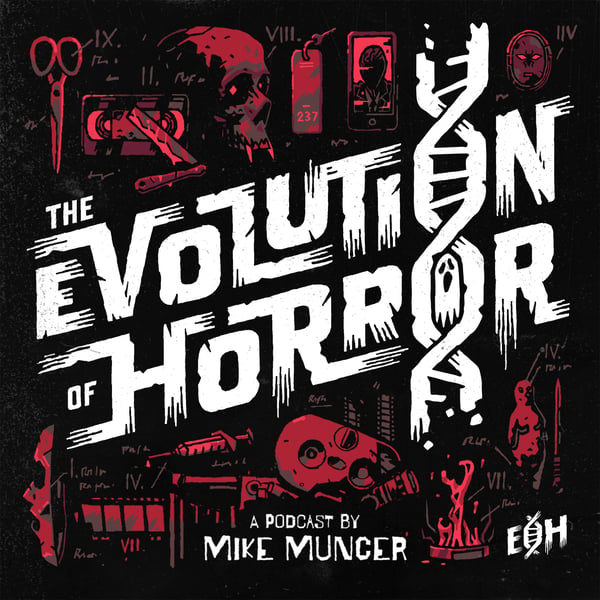VAMPIRES: Pt 12 - Blacula (1972) / Ganja & Hess (1973)
The Evolution of Horror
Mike Muncer
4.8 • 1.7K Ratings
🗓️ 28 July 2022
⏱️ 85 minutes
🧾️ Download transcript
Summary
This week Mike is joined by author and educator Tananarive Due to discuss the era of Blaxsploitation horror through the 1970s, before discussing two Blaxsploitation vampire classics, BLACULA (1972) and GANJA & HESS (1973) in spoilerific detail…
Music by Jack Whitney.
Visit our website www.evolutionofhorror.com
Buy tickets for our next upcoming EVOLUTION OF HORROR PRESENTS screening at the Genesis Cinema!
www.evolutionofhorror.com/genesis
You can now buy Evolution of Horror merch on our TeePublic store!
www.evolutionofhorror.com/merchandise
Subscribe and donate on PATREON for bonus monthly content and extra treats...
www.patreon.com/evolutionofhorror
Follow us on TWITTER
Follow us on INSTAGRAM
Like us on FACEBOOK
Join the DISCUSSION GROUP
Join the EVOLUTION OF HORROR DISCORD
Follow us on LETTERBOXD
Mike Muncer is a producer, podcaster and film journalist and can be found on TWITTER
Transcript
Click on a timestamp to play from that location
| 0:00.0 | So do myself. I say, look the other way when it come by you. Up until the 1970s, American |
| 0:26.7 | and Western horror had been almost exclusively white. In 1968, Night of the Living Dead became |
| 0:33.7 | a landmark movie for having a black man in the lead role. Until this point, black people |
| 0:39.1 | had been relegated to supporting roles or would be othered in some way or another. |
| 0:45.1 | But in 1972, American International Pictures, who specialised in low-budget exploitation |
| 0:51.6 | cinema produced a film directed by a black filmmaker, William Crane, and starring a prestigious |
| 0:58.0 | black stage actor, William Marshall. The film was black-yellow. |
| 1:05.9 | Black-yellow took many of the classic vampire and Dracula tropes, but rooted it in modern |
| 1:11.4 | black culture. Black-yellow became known as the first black horror film. It was a huge |
| 1:17.8 | hit and helped launch a movement that became known throughout the 1970s as black exploitation. |
| 1:24.7 | While often black exploitation movies were cheap productions made to be churned out quickly |
| 1:29.2 | to maximise profit, some gave black directors the chance to make artistic, thought-provoking |
| 1:35.8 | art films that could be distributed to wider audiences. |
| 1:44.0 | In 1973, Bill Gunn made his vampire film, Ganger and Hesse, which felt less like a traditional |
| 1:51.2 | horror film and instead more like an experimental and intensely personal reflection on race, |
| 1:58.2 | class and gender. Unlike black-yellow, Ganger and Hesse didn't impress American audiences |
| 2:05.0 | of the time. It was almost too bold, too ahead of its time, and too black for white audiences. |
| 2:12.3 | Nowadays, Ganger and Hesse is considered one of the great vampire films of the 1970s and |
| 2:18.7 | a seminal text in the history of black horror cinema. |
| 2:31.2 | Join me as we continue exploring the evolution of the vampire and we discuss black-yellow and |
| 2:37.1 | Ganger and Hesse. |
| 2:47.0 | Welcome back to the evolution of horror. My name is Mike Munster, and as ever, I am your |
... |
Please login to see the full transcript.
Disclaimer: The podcast and artwork embedded on this page are from Mike Muncer, and are the property of its owner and not affiliated with or endorsed by Tapesearch.
Generated transcripts are the property of Mike Muncer and are distributed freely under the Fair Use doctrine. Transcripts generated by Tapesearch are not guaranteed to be accurate.
Copyright © Tapesearch 2025.

